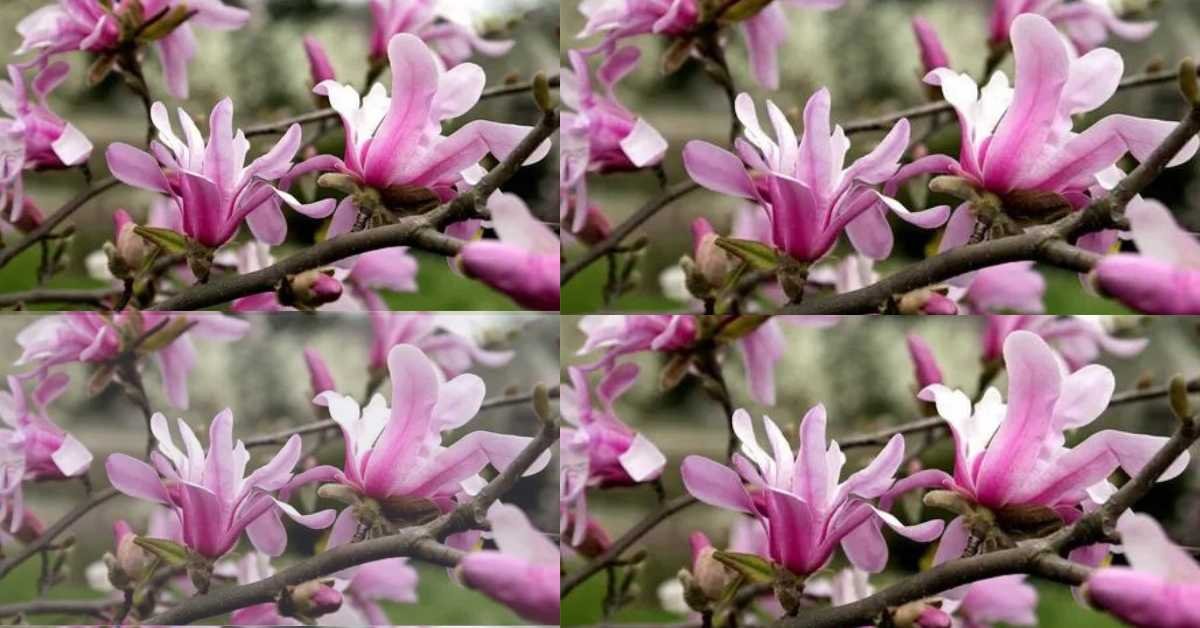Magnolias, known for their large, fragrant blooms and striking appearance, are among the most admired ornamental trees and shrubs.
Often referred to as “Magnolie” in some regions, these trees have graced gardens, parks, and landscapes for centuries, symbolizing elegance and beauty.
While renowned for their showy flowers, growing and maintaining Magnolie trees require specific care and conditions.
This comprehensive guide will help you understand everything about Magnolias, from their varieties and history to their care, propagation, and everyday challenges.
What is Magnolie (Magnolia)?
Magnolia, or Magnolia, is a genus of flowering plants belonging to the family Magnoliaceae. The genus includes over 200 species, ranging from shrubs to large trees, and is native to various regions across Asia, the Americas, and the Caribbean. Magnolias are easily recognized by their large, tulip-shaped flowers, ranging from white and pink to yellow and purple, depending on the species.
Magnolias are ancient plants, with fossil records dating back millions of years, making them one of Earth’s oldest angiosperm (flowering plant) lineages.
These trees have long been admired for their beautiful blossoms, which often bloom before their leaves emerge, adding to their stunning appearance.
Varieties of Magnolie
Magnolias come in various species, each with its unique characteristics in terms of size, flower shape, and blooming season. Some of the most popular Magnolie varieties include:
1. Magnolia grandiflora (Southern Magnolia)
This is one of the most famous Magnolia species, known for its large, leathery, evergreen leaves and massive white flowers reaching up to 12 inches in diameter. Native to the southeastern United States, it’s often called the Southern Magnolia. The Southern Magnolia can grow up to 80 feet tall and is a beloved tree in gardens and parks.
2. Magnolia soulangeana (Saucer Magnolia)
The Saucer Magnolia is a hybrid species that is highly popular for its beautiful, large pink and white blooms. It is a deciduous tree, shedding its leaves in the fall, and typically grows to around 20-30 feet tall. Its cup-shaped flowers bloom in early spring, creating a breathtaking display before the leaves appear.
3. Magnolia stellata (Star Magnolia)
This is a smaller Magnolia variety, often grown as a shrub or small tree. It’s best known for its star-shaped white or pale pink flowers that bloom in early spring. The Star Magnolia is more compact, reaching heights of 10-15 feet, making it an excellent option for smaller gardens or as a focal point in landscaping.
4. Magnolia acuminata (Cucumber Tree)
The Cucumber Tree gets its name from the small, cucumber-like fruit it produces after flowering. This species is less known for its flowers, which are smaller and more subdued in color, usually yellow or greenish, but it is valued for its large, towering stature. It can grow up to 60 feet tall and is native to North America.
5. Magnolia liliiflora (Lily Magnolia)
This smaller, deciduous species is known for its stunning purple or pink blooms that resemble lilies, hence its name. Native to China, the Lily Magnolia typically grows as a shrub or small tree, reaching 12 feet tall. Its flowers often bloom later in the season, making it a beautiful choice for extending the blooming period in gardens.
How to Grow and Care for Magnolie
Caring for a Magnolie tree is relatively easy but requires attention to detail to ensure it thrives in your garden. Here’s a step-by-step guide to growing and maintaining your Magnolia tree.
1. Choosing the Right Location
Magnolias prefer full sun to partial shade, depending on the variety. Deciduous Magnolias like more sunlight, while evergreen species, such as Magnolia grandiflora, can tolerate some shade. Choose a location with well-draining soil to avoid waterlogging, which can damage the roots.
Magnolias, especially the larger varieties, also need plenty of space to grow. When planting one in your garden, consider the tree’s mature height and spread to avoid crowding other plants or structures.
2. Soil Requirements
Magnolias thrive in slightly acidic, well-draining soil rich in organic matter. They do not tolerate soggy or compacted soils, so make sure the planting area has good drainage. To increase aeration and nutrient content, you can improve soil texture by adding compost or peat moss.
3. Watering
Magnolia trees, especially when newly planted, need regular watering to establish their roots. Keep the soil consistently moist but not soggy. Once established, most Magnolias can tolerate occasional dry spells, but it’s best to water them during prolonged periods of drought to keep them healthy and ensure blooming.
During the first few years, deep watering once a week is recommended, particularly during hot weather. Water at the tree’s base to ensure the roots get enough moisture.
4. Fertilizing
Magnolias benefit from regular feeding during the growing season. Use a balanced, slow-release fertilizer in the spring to encourage healthy growth and blooming. You can also apply organic matter like compost around the tree’s base to add nutrients to the soil.
Avoid fertilizing in late summer or fall, as this can encourage new growth that may be damaged by frost.
5. Mulching
Applying a layer of mulch around the base of your Magnolia helps retain moisture, regulate soil temperature, and suppress weeds. Use organic mulch like wood chips or shredded bark, and spread it in a thick layer, avoiding direct contact with the trunk to prevent rot.
6. Pruning
Magnolias generally require minimal pruning, as their natural shape is part of their beauty. However, you can remove dead or damaged branches as needed. The best time to prune is right after the tree has bloomed to avoid cutting off next year’s buds.
For larger species, you may also want to prune to maintain shape or remove branches crossing or rubbing against each other.
Common Issues with Magnolie
Despite their relatively low-maintenance nature, Magnolias can face several challenges. Here are some common issues and how to address them.
1. Leaf Yellowing
Yellowing leaves on a Magnolia can indicate poor drainage or overwatering. Ensure the soil is well-draining, and adjust your watering schedule if necessary. Yellowing can also occur if the soil is too alkaline, so test your soil’s pH level and change it with an acidifying fertilizer if needed.
2. Frost Damage
Early spring frosts can damage the buds and flowers of your Magnolia, especially the deciduous varieties. If you live in a region prone to late frosts, consider covering your tree with a light fabric to protect the blooms.
3. Pests
Magnolias are relatively pest-resistant but can occasionally be affected by aphids, scale insects, or spider mites. Regularly check your tree for signs of infestation, such as yellowing leaves, sticky residue, or webbing. You can treat minor infestations with insecticidal soap or neem oil.
4. Root Rot
Magnolias are sensitive to overwatering and poor drainage, which can lead to root rot. Check the soil for excess moisture if you notice stunted growth or wilting. You may need to improve the drainage around your tree or reduce watering to prevent further damage.
How to Propagate Magnolie
Magnolias can be propagated through various methods, including seeds, cuttings, and air layering. Your chosen method depends on your experience level and the specific variety of Magnolia you are growing.
1. Seed Propagation
Growing Magnolias from seeds can be slow, as the seeds require cold stratification before germinating. To propagate by seed:
- Collect seeds from mature Magnolia fruits in the fall.
- Remove the seeds from their fleshy coverings and soak them in water for a few days.
- Place the seeds in moist sand or peat moss and refrigerate for three to six months.
- Plant the seeds in pots or directly in the ground in the spring.
2. Cuttings
Propagating Magnolias from cuttings is a quicker method, although rooting can be tricky. To propagate by cuttings:
- Take a 6-8 inch cutting from a healthy, semi-hardwood branch in the summer.
- Dip the cut end in rooting hormone to encourage root growth.
- Plant the cutting in a pot filled with a well-draining potting mix and keep it moist.
- Place the pot in a warm, humid location; roots should develop in a few months.
3. Air Layering
Air layering is another effective way to propagate Magnolias. This method involves wounding a branch and encouraging it to form roots while still attached to the parent plant. Once rooted, the branch is cut off and planted separately.
Magnolias in Garden Design
Magnolias are prized for their ornamental value and can be used in various ways in garden design. Their large size and dramatic blooms make them ideal focal points in a landscape. Smaller varieties, like Magnolia stellata, can be planted in containers or used as accent shrubs in smaller spaces.
When planting Magnolias, consider their blooming season and pair them with other plants that complement their beauty. For example, planting early-blooming Magnolias alongside evergreens or other flowering shrubs like azaleas and rhododendrons creates a lush, multi-season garden.
Conclusion
Magnolie trees are timeless and elegant additions to any landscape, offering stunning flowers and year-round beauty. Whether you’re looking to plant a towering Magnolia grandiflora or a compact Magnolia stellata, proper planting, care, and maintenance are the keys to success. With the right location, soil, and attention, your Magnolia tree can thrive and reward you with breathtaking blooms for years.
By following the tips and advice outlined in this guide, you’ll be well-equipped to grow and care for your Magnolia tree, ensuring it remains a cherished part of your garden.


